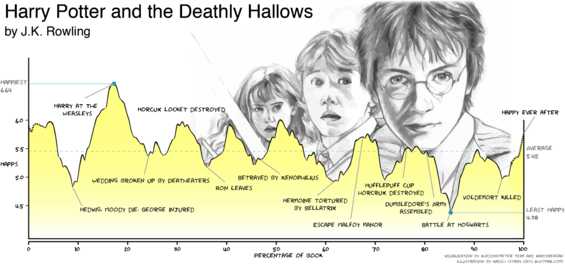

| Online: | |
| Visits: | |
| Stories: |

| Story Views | |
| Now: | |
| Last Hour: | |
| Last 24 Hours: | |
| Total: | |
Fictional Books Use Only Six Emotional Story Lines
How scientists are using big data analysis to deconstruct the art of storytelling
Our most beloved works of fiction hide well-trodden narratives. And most fictions is based on far fewer storylines than you might have imagined. To come to this conclusion, big data scientists have worked with colleagues from natural language processing to analyse the narrative in more than a thousand works of fiction.
The first filter—dubbed singular value decomposition—reveals the underlying basis of the emotional storyline, the second—referred to as hierarchical clustering—helps differentiate between different groups of emotional storylines, and the third—which is a type of neural network—uses a self-learning approach to sort the actual storylines from the background noise. Used together, these three approaches provide robust findings, as documented on the hedonometer.org website.
Reagan and colleagues thus determined that there were only six main emotional storylines. These include ‘rags to riches’ (sentiment rises), ‘riches to rags’ (fall), ‘man in a hole’ (fall-rise), ‘icarus’ (rise-fall), ‘Cinderella’ (rise-fall-rise), ‘Oedipus’ (fall-rise-fall). This approach could, in turn, be used to create compelling stories by gaining a better understanding of what has previously made for great storylines. It could also help teach common sense to artificial intelligence systems.
Citation: The emotional arcs of stories are dominated by six basic shapes, Authors: A. J. Reagan, L. Mitchell, D. Kiley, C. M. Danforth and P. Sheridan Dodds (2016),
Eur. Phys. J. Data Science, 5:31, DOI 10.1140/epjds/s13688-016-0093-1
Source:



